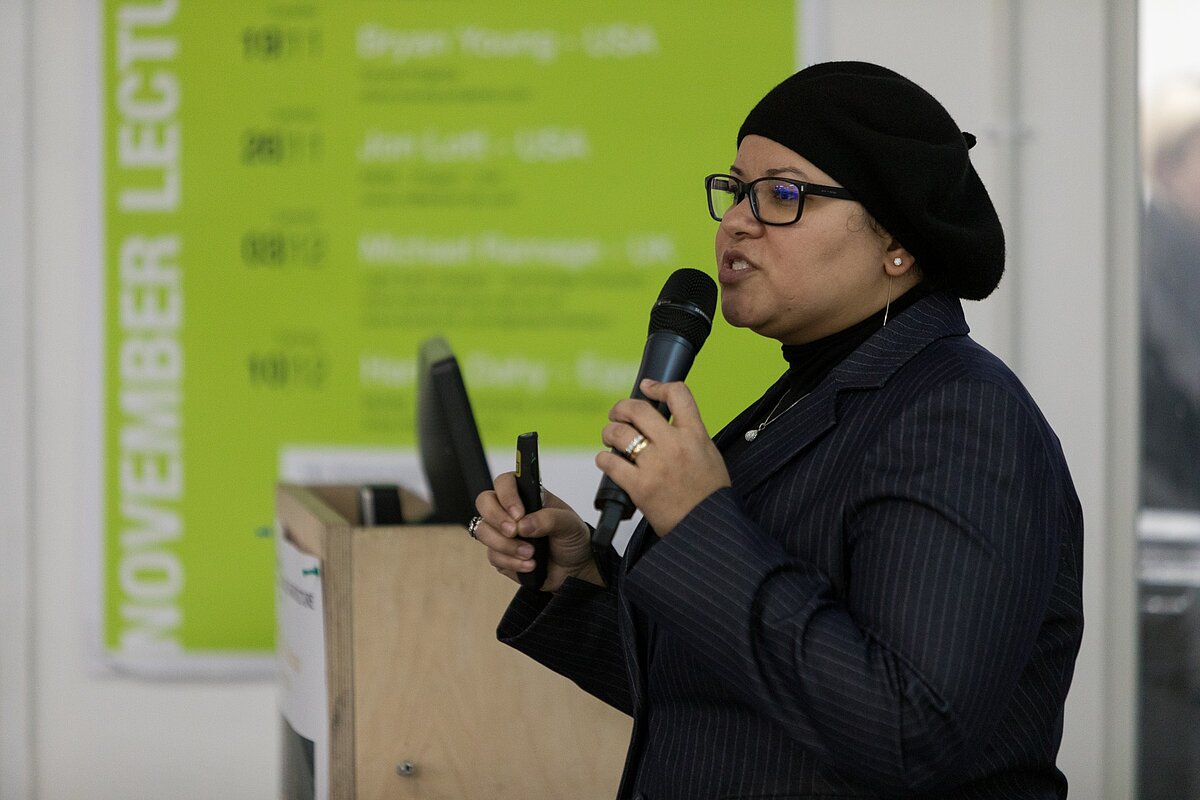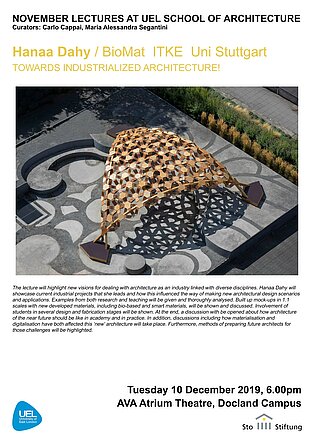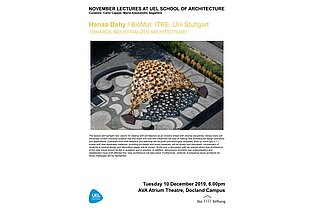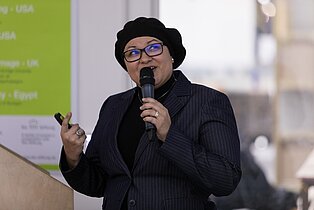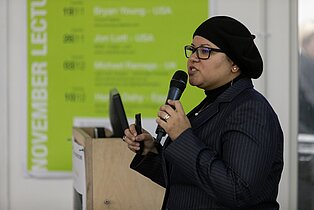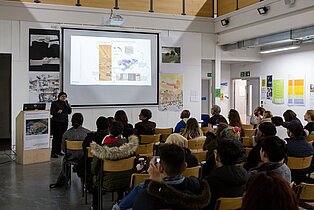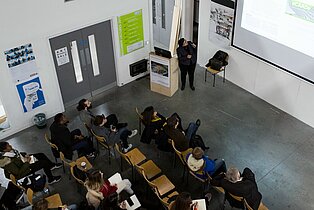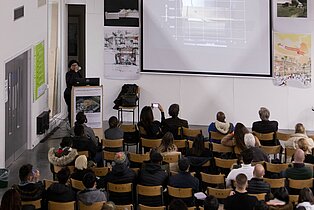Review | Hanaa Dahy in London
The final lecture in this series on research was delivered by Hanaa Dahy, director of BioMat, a research group looking at bio-based materials and material cycles in architecture. BioMat is based within the Institute of Building Structures and Structural Design at the University of Stuttgart, where Dahy is a Junior Professor. Prior to her PHD at the University, Dahy ran her own architecture practice in Cairo, where she was born and studied Architectural Engineering.
In this lecture, entitled ‘Towards Industrialised Architecture’ Dahy shared both her own projects and current projects by BioMat students. She opened with an introduction to the organisation, which accommodates internal and external PhD students, and covers biometrics, smart materials and design and fabrication systems, to explore the potential applications of bio-based materials in sustainable architecture.
Dahy highlighted the overlap between teaching, research, consulting and development that takes place within the department, and the cross-disciplinary nature of the research, which covers architecture and engineering. She also explained the effect of buildings on the environment, and her belief that architects have a real input in how we move towards the future.
Dahy laid out the fundamentals of a biocomposite, which must include a natural fibre and bio-based matrix, before moving on to explain her own development of a new fully biodegradable high density fibreboard, BioFelxi. Dahy explained how BioFlexi utilises straw microfibers, offering a new lifecycle to one of the most commonly available resources in the world, and utilising its naturally flame-retardant qualities. Dahy explained the success of BioFlexi in being patented in Europe and internationally, and received backing from industrial investors to upscale its application.
Dahy then explained one of the key roles of the department, to encourage students to make their own creations, applying a composition of biomaterials, in order to increase knowledge, excel research, and develop the discipline. She showcased a number of furniture designs by BioMat students that utilise biomaterials using a range of fabrication techniques, including robotics, vacuum thermoforming, laser cutting and CNC milling.
Dahy then went on to explain the importance of exhibiting BioMat prototypes at fairs and exhibitions internationally, taking them to industry for exposure, external review and investment. Dahy shared three mock-ups that BioMat have recently exhibited. The first she presented, which took almost a year to upscale, was an interlocking shell pavilion, made of CNC milled plywood, and modelled on the interlocking structure of diatom algae.
The second project Dahy presented was the Biocomposites Experimental Pavilion, made of 360 individual wood-based biocomposite plates. Dahy shared each stage of the project, which was run with a project management hierarchy that covered everything from making the components, to preassembly, to the final construction phase of the 3.5m tall structure. Dahy explained how the pavilion involved product designers, architects and fabricators, as well as an external company to scan the structure and rigorously monitor accuracy between the model and the physical prototype.
The third project that Dahy presented, from 2019, was a single-curved canopy made from natural flax fibres, and fabricated using a combination of Tailored Fibre Placement (TFP) and closed vacuum-assisted moulding. Dahy again shared the process which led up to final lightweight structure, which involved four months of intensive work between ten student specialists, including design, testing, and digitised fabrication.
Dahy let students know her first book into biocomposites in architecture and the building industry is soon to be published. During the questions and answers, she called for greater funding and encouragement from industry bodies into research into sustainable materials, and her aim for the department to bring new biomaterials into construction to partially replace wood and concrete. She also commended the diverse nature of architectural education, helping architects to lead other disciplines with the construction industry to take a global vision of the future.
Interview-Video
Hanaa Dahy researches new ways for a sustainable architecture.


